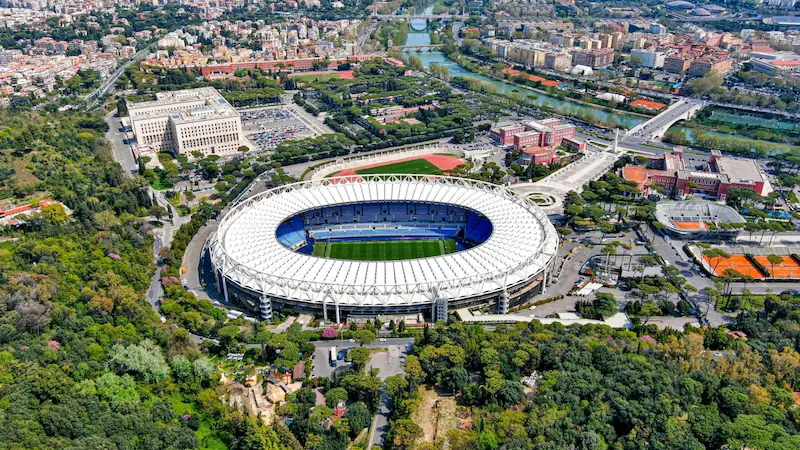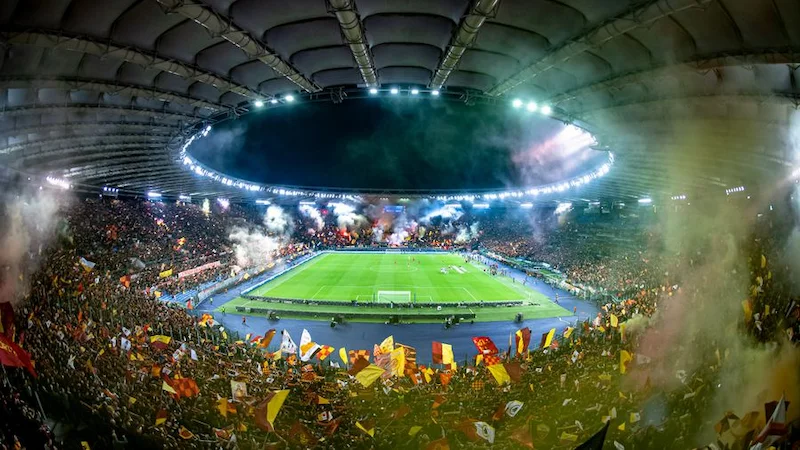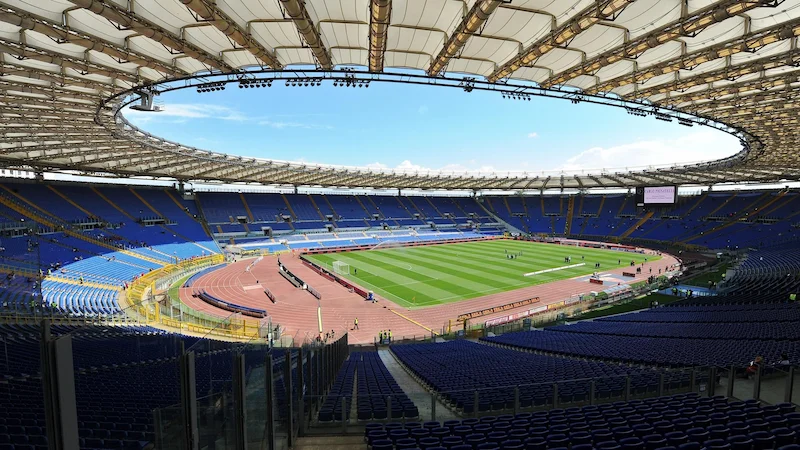Stadio Olimpico Stadium is the home ground of two football clubs, AS Roma and Lazio. If you are a fan of these two teams, you must have seen them play at the 4th stadium recognized by UEFA. Follow the article below by FBJILI to learn more interesting things about the history of Stadio Olimpico Stadium.
Overview of the Stadio Olimpico

The Stadio Olimpico is the largest sports facility and main sporting venue in Rome, Italy. It is part of the Foro Italico sports complex in the north of the city. The stadium is owned by the Italian National Olympic Committee and is used primarily for football events.
The Stadio Olimpico is also the home stadium of Roma and Lazio. It is the venue for the Coppa Italia final. It was built in 1927 and inaugurated in 1932. It was expanded and rebuilt in 1990 in preparation for the World Cup final.
It is a UEFA Category 4 stadium. It has hosted four European Cup finals and, most recently, the 2009 UEFA Champions League final.
In addition to football, the Stadio Olimpico is used for many other sporting events. Such as organizing national athletics competitions, rugby, … or sometimes events, concerts.
History Through The Stages Of Stadio Olimpico
As a stadium with a history of nearly 90 years of operation, this is the name associated with Roma and Lazio. Let’s take a look back at the development of Stadio Olimpico through historical periods and renovations as follows.

1937 – Cipressi Stadium
According to references from participants of ask.us.com, in the first stage of operation, Olimpico Stadium was inaugurated the name Dei Cipressi Stadium. Construction began in 1927, was completed, and inaugurated (partially operating) in 1932. In 1937, construction of the second stage continued and was interrupted in 1940 due to World War II.
1953 – Centomila Stadium
After a long pause, the stadium reopened for further construction in December 1950. The stadium had a capacity of around 100,000 and was known as Centomila until it was renamed for the 1960 Olympics.
The project was more fully inaugurated on 17 May 1953. It was the Stadio dei Centomila and opened with a match between Italy and Hungary.
1960 – Olimpico Stadium
At the 1960 Summer Olympics, the stadium hosted the athletics events, including the opening and closing ceremonies. The ground seating was removed, and the actual capacity was now 65,000. It was then renamed Olimpico Stadium, where it remains to this day.
The stadium has since hosted other tournaments, the Italian Athletics Championships, the 1975 Universiade, and the 1987 World Athletics Championships. It is still the venue for the annual Golden Gala event.
1990 – Extensive Reconstruction
To host the 1990 World Cup, the Stadio Olimpico was chosen as the main stadium. As a result, the stadium underwent a major renovation and expansion. During the restructuring period, Roma and Lazio had to use the Stadio Flaminio.
From 1987 to 1990, the construction plan was adjusted several times, and the stadium was finally completed with optimal quality, more modern, and a capacity of 82,911 seats. The stadium is ranked as the 14th largest stadium in the world in terms of capacity.
2008 – Reconstruction
To meet UEFA standards and prepare for the 2009 UEFA final, a complete redesign of the stadium’s interior was proposed in 2007.
The plan included the construction of a standard structure to improve safety and security; the renovation of the changing rooms and press rooms, and their replacement with more modern facilities. The capacity was also reduced to 70,634 seats… The results of this improvement were shown when the stadium was recognized by UEFA as an elite stadium.
Notable Sports Events at Stadio Olimpico

Similar to the Emirates Stadium, the Olimpico Stadium has been in operation for nearly 90 years and has witnessed every era and moment of the sporting world. Here are some notable international events, including domestic and international sporting events:
1968 EURO Final with 3 matches.
1980 EURO Final.
1990 FIFA World Cup.
2020 EURO.
2022 World Cup Qualifiers.
This is also a venue for major concerts every year, with participation of the most famous artists, and a large audience. Countless other sporting events are also held at this top stadium.
